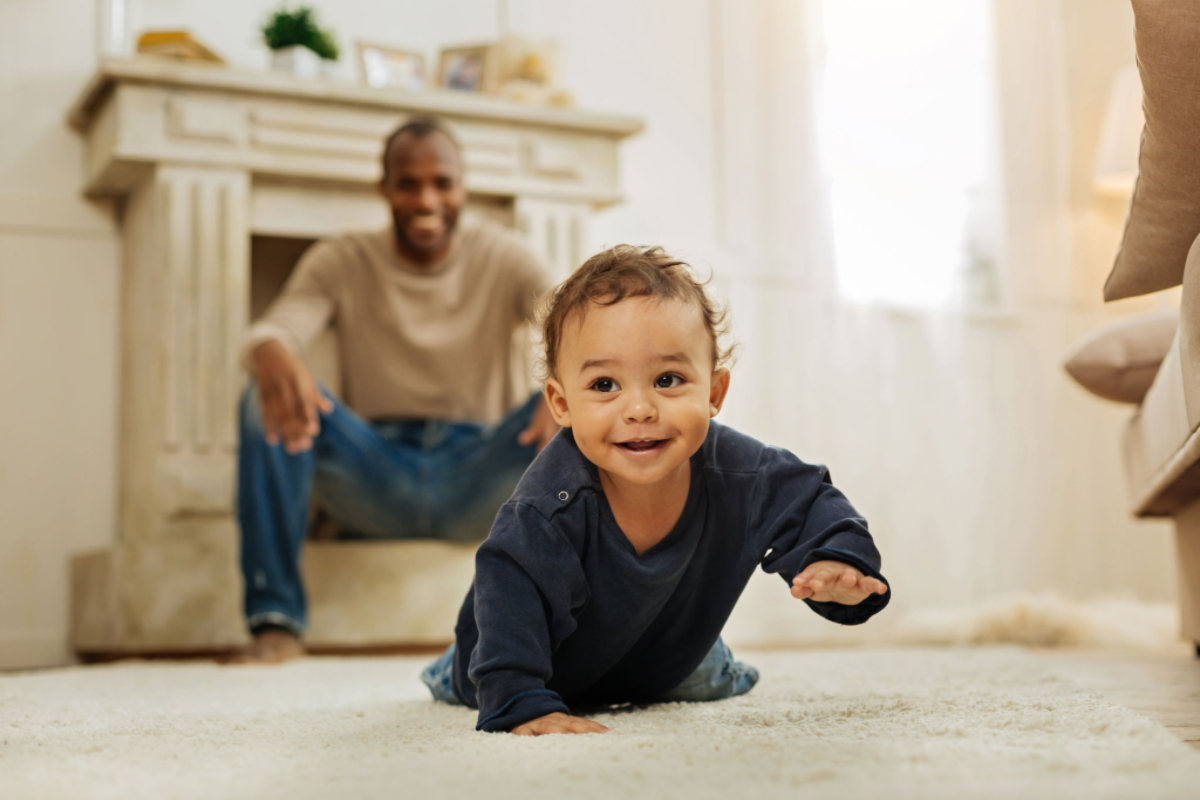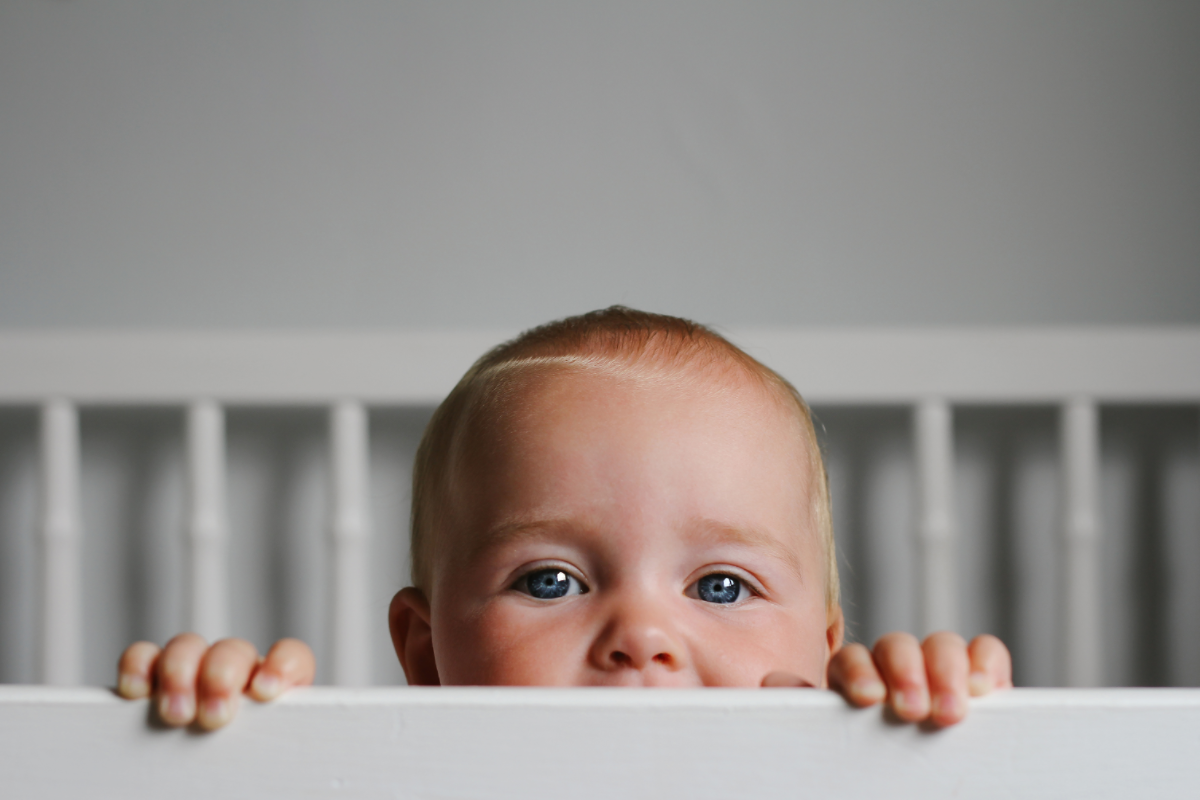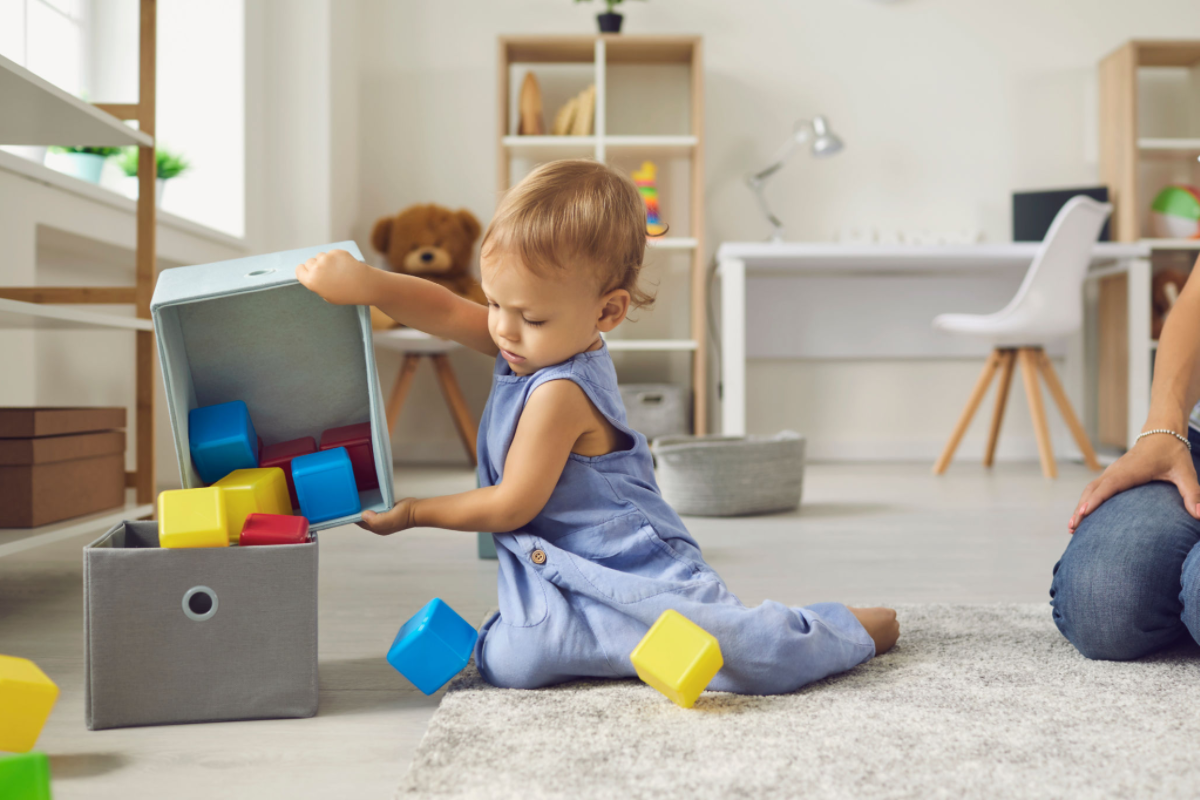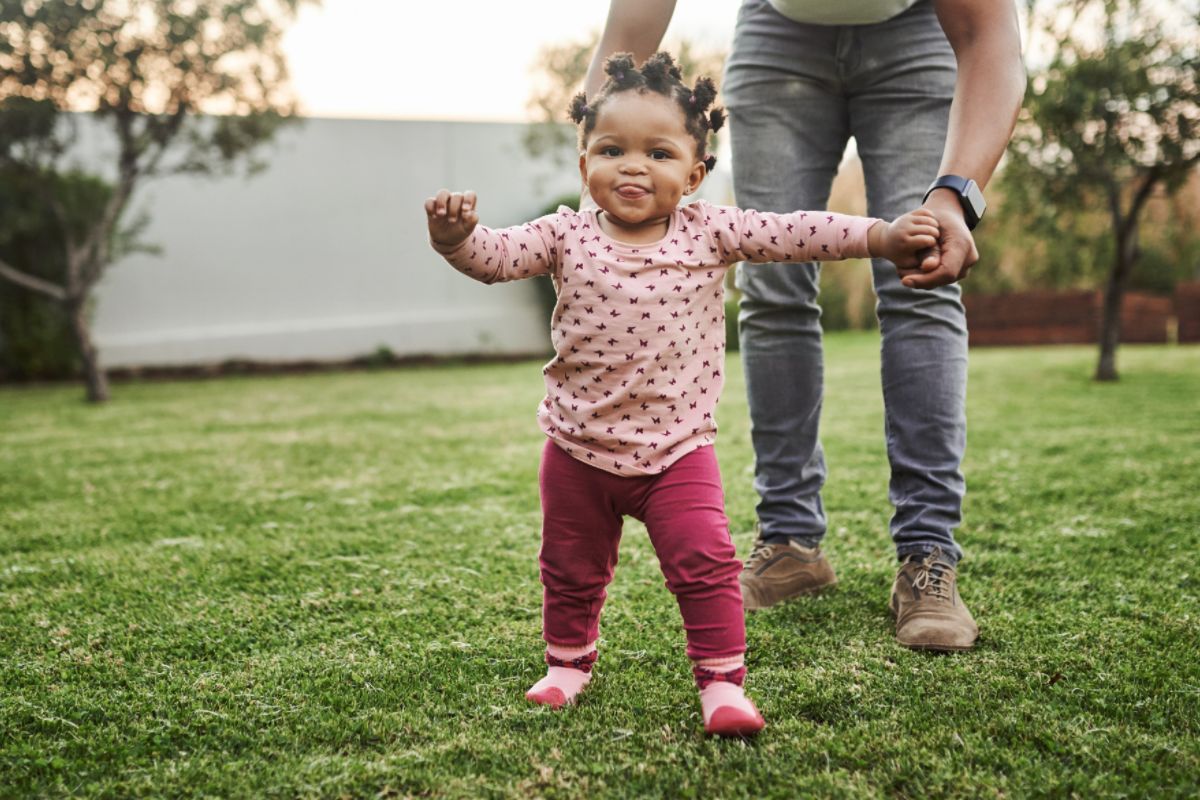Becoming a parent is a joyous journey filled with memorable moments and boundless love. But it’s also a journey that comes with new responsibilities, especially when it comes to ensuring the safety and well-being of your little one. That’s where the Motherhood Center in Houston, a trusted resource for families for over 20 years, steps in.
Situated at the heart of Houston, the Motherhood Center has been a steadfast partner for families, offering prenatal and parenting education, yoga and fitness classes, massage services, baby doula services, and childcare assistance. They understand that parenthood brings both immense joy and unique challenges. With the experts at the Motherhood Center, we bring you this baby proofing checklist. We’ll help you navigate the journey of making your home safe for your bundle of joy, blending their wealth of experience with our baby proofing insights.
Your child’s safety is our top priority. With the guidance of the Motherhood Center and this baby proofing guide, you can navigate the sometimes overwhelming process of making your home both beautiful and baby-safe. Let’s embark on this journey together, room by room, ensuring that your child can take their first steps, explore the world, and thrive, knowing that they are protected in every corner of your loving home.
The Nursery
Creating a safe and nurturing nursery is paramount to ensuring your baby’s well-being. This is where your little one will spend a significant amount of time, so taking every precaution is essential. Let’s dive into the key elements of baby proofing your nursery to provide a secure haven for your baby.
Secure the Crib
The crib is the centerpiece of your nursery, and it’s crucial to make it as safe as possible. Start by ensuring that the crib meets current safety standards, with slats spaced appropriately to prevent entrapment. Avoid placing soft bedding, pillows, or stuffed animals inside the crib, as these can pose suffocation risks. Use a firm mattress with a fitted sheet that stays snugly in place.
Consider installing crib rail covers to protect your baby from gnawing on the crib rails. Also, ensure the crib’s drop-side mechanism is secure, as older cribs with this feature can be hazardous. Finally, keep the crib away from windows, blinds, or curtains with cords that could be within your baby’s reach.
Dresser and Changing Table Safety
Dressers and changing tables often contain baby essentials, and they should be baby proofed to prevent accidents. Attach furniture straps to secure these pieces to the wall, preventing them from tipping over. Place heavy items in the lower drawers to add stability.
When it comes to changing tables, never leave your baby unattended, even for a moment. Keep all diapering supplies within arm’s reach, and use a safety strap to secure your baby during changes. This precaution ensures your baby’s safety while allowing you to access everything you need conveniently.
Baby Monitor Setup
A baby monitor provides peace of mind, allowing you to keep an ear and eye on your little one. Position the monitor where you can see your baby in the crib. Ensure that cords are safely out of reach and not posing a strangulation risk. If you opt for a video monitor, choose a secure Wi-Fi connection and enable password protection to safeguard against unauthorized access.
Electrical Outlets and Cord Management
Electrical outlets and cords are potential hazards in any room, but they’re especially critical to address in the nursery. Use outlet covers or safety caps to prevent your baby from inserting objects into outlets. Consider cord organizers or covers to keep electrical cords out of sight and out of reach. This not only reduces tripping hazards but also prevents your curious little one from pulling on cords, which could lead to accidents.
By addressing these key areas in your nursery, you’ll create a secure environment where your baby can rest, play, and thrive without unnecessary safety concerns.
The Living Room
The living room is the heart of your home, where the family gathers and memories are made. However, it’s also a space filled with potential hazards for your little explorer. In this section, we’ll guide you through the essential steps to baby proof your living room, ensuring it remains a safe and enjoyable place for everyone.
Childproofing Furniture and Sharp Corners
Start by securing your furniture to prevent tipping accidents. Anchor heavy pieces like bookshelves, entertainment centers, and TV stands to the wall. Use furniture straps or brackets for this purpose, ensuring they are securely fastened. These precautions not only protect your baby but also help avoid damage to your furniture.
Additionally, cover sharp corners and edges with soft corner protectors or edge guards. These simple yet effective measures will help prevent painful bumps and bruises as your little one begins to explore their surroundings.
TV and Entertainment Center Safety
The TV and its accompanying cords and components pose potential dangers. Mount your television securely on the wall or use a stable TV stand designed for the purpose. Keep cords organized and out of reach, using cord covers or clips to secure them against the wall or furniture.
Consider using a TV safety strap to prevent the TV from accidentally toppling over. Remote controls, game controllers, and other small items should be kept out of reach, as they can be choking hazards.
Fireplace and Hearth Precautions
Fireplaces provide warmth and ambiance, but they also present safety challenges. Use a sturdy fireplace gate or screen to keep your baby away from the flames and hot surfaces. Ensure that the gate is securely attached and cannot be easily pushed over.
Keep fireplace tools, matches, and lighters out of reach. Additionally, consider fireplace hearth cushions to soften the edges and corners, preventing injuries if your baby stumbles in that direction.
Window Blind Cord Safety
Blind cords are potential strangulation hazards. To address this, use cord wind-ups or cord cleats to keep cords out of your baby’s reach. Alternatively, consider cordless window coverings or retrofit your blinds with cordless options.
Regularly inspect blinds and shades for any damaged or loose cords and replace them promptly. Taking these steps ensures that your living room remains a safe and comfortable space for your family to enjoy without worrying about potential hazards.
By implementing these living room baby proofing measures, you’ll create a secure environment where you and your little one can spend quality time together, free from safety concerns.
The Kitchen
The kitchen is a bustling hub of activity in any home, but it also presents numerous potential hazards for a curious little one. In this section, we’ll delve into the essential steps to baby proof your kitchen, ensuring both safety and convenience for your family.
Cabinet and Drawer Locks
Babies and toddlers are often drawn to cabinets and drawers, making it crucial to secure them properly. Invest in cabinet and drawer locks or latches that are both effective and easy for adults to operate. These locks will prevent your little explorer from accessing potentially dangerous items like cleaning supplies, sharp utensils, or even pots and pans.
Take extra care with lower cabinets, as they are at just the right height for curious hands. Keep frequently used items within reach on higher shelves and secure the lower ones with locks.
Stove and Oven Safety
The stove and oven are central to cooking but can be hazardous areas for little ones. Install stove knob covers to prevent your child from accidentally turning on burners. These covers allow you to cook without the risk of a child tampering with the controls.
For added safety, consider using stove guards or safety gates to create a physical barrier between your child and the hot appliances. When cooking, use the back burners whenever possible and turn pot handles inward to prevent accidental spills.
Childproofing Appliances
Appliances like dishwashers and refrigerators can be intriguing to children, but they pose potential dangers. Ensure your dishwasher has a lock to prevent curious fingers from opening it mid-cycle. Refrigerators often have water and ice dispensers, which should be secured to prevent choking hazards.
Keep appliance cords out of reach or use cord organizers to bundle and secure them. This not only reduces clutter but also minimizes the risk of your child pulling on cords.
Safe Storage of Cleaning Supplies
Cleaning supplies are typically stored under the sink, making it a hotspot for potential poisonings. Store all cleaning products, detergents, and chemicals in locked cabinets or high shelves that your child cannot reach. Consider installing safety latches on under-sink cabinets to provide an additional layer of protection.
It’s also wise to use child-resistant caps on cleaning products and to keep them in their original containers. This way, it’s easier to identify potentially harmful substances, and the caps provide an added layer of safety.
By taking these steps to baby proof your kitchen, you’ll create a safe and functional space where you can cook, dine, and spend quality time with your family without constant worry.
The Bathroom
The bathroom, with its combination of water, hard surfaces, and small items, presents a unique set of challenges when it comes to baby proofing. It’s essential to take specific measures to ensure your baby’s safety in this space, where accidents can happen quickly. In this section, we’ll guide you through the steps to make your bathroom a secure place for your little one.
Babyproofing the Toilet
Toilets can be fascinating to babies but also pose drowning hazards. Install a toilet lock or lid lock to prevent your baby from lifting the toilet seat. These locks are easy for adults to use but provide an effective barrier for curious little hands.
Keep the bathroom door closed and use a childproof door knob cover to limit access to the bathroom when it’s not in use. This way, you can ensure that your baby doesn’t wander into the bathroom without your supervision.
Bath Time Safety Measures
Bath time is a special bonding experience, but it requires close attention to safety. Always test the water temperature with your hand or a bath thermometer to ensure it’s comfortably warm. Set your water heater to a safe temperature to prevent scalding accidents.
Use a non-slip mat or bath seat in the tub to prevent your baby from slipping. Keep all bath essentials, such as soap, shampoo, and towels, within arm’s reach so that you can maintain constant supervision. Never leave your baby unattended in the bath, even for a moment.
Medication and Toiletry Storage
Bathrooms often house medications, toiletries, and cleaning supplies that can be harmful if ingested. Ensure that all medications, including over-the-counter and prescription drugs, are stored in a locked medicine cabinet, well out of your child’s reach. Consider using childproof latches on these cabinets for added security.
Keep toiletries and cosmetics in closed containers or drawers, as items like perfume, lotion, or small objects can be choking hazards. If you use electronic devices like hair dryers or straighteners, unplug them and store them safely after use to prevent burns or electrical accidents.
Electrical Outlets and Hair Dryer Safety
Electrical outlets and devices are common in bathrooms and require special attention. Use outlet covers or safety plugs to keep your baby from inserting objects into outlets. If you use electrical appliances like hair dryers or electric razors, unplug them and store them safely when not in use. Ensure that cords are not dangling within your baby’s reach, as they can be tempting to pull on.
Taking these precautions in the bathroom will create a safer environment for your baby during daily routines and provide peace of mind as you go about your day.
The Bedroom
Your baby’s bedroom is a sanctuary where dreams are born, and peaceful nights are cherished. As with any room in your home, ensuring safety is paramount. In this section, we’ll guide you through the essential steps to baby proof the bedroom, making it a secure and comforting space for your little one.
Securing Tall Furniture
The bedroom often contains tall furniture pieces like dressers, wardrobes, and bookshelves that can tip over if climbed on by an adventurous toddler. To prevent accidents, anchor these items securely to the wall using furniture straps or brackets. This simple step adds stability and eliminates the risk of furniture tipping over.
Inspect the room for any other top-heavy items or decorations that could pose a danger if pulled or bumped. Consider relocating or securing them to ensure your child’s safety.
Window and Blind Safety
Windows provide natural light and fresh air but can also present hazards. Install window guards or stops to limit how far windows can be opened. This prevents accidental falls or entrapment. Ensure that cords from blinds or curtains are safely out of your baby’s reach by using cord wind-ups or cord cleats. Cordless window coverings are another excellent option for added safety.
Safe Storage of Small Items
Your baby’s bedroom may contain small items like toys, books, or decorative objects that can pose choking hazards. Regularly inspect the room for any small items that your child could pick up and put in their mouth. Store these items in secure containers, out of your baby’s reach. Consider using toy bins or organizers to keep small toys and objects neatly stored and easily accessible for playtime.
Nightstand and Lamp Safety
Nightstands and bedside tables often contain items like lamps, clocks, and electronic devices. Ensure that these items are placed securely and cannot be easily pulled down by your child. Use cord organizers to manage and secure electrical cords to prevent tangling or tripping hazards.
Consider using nightlights with LED bulbs that emit minimal heat to prevent burns. Keep nightlights out of your baby’s reach, as they may be tempted to touch them out of curiosity.
By taking these steps to baby proof the bedroom, you’ll create a safe and comforting space where your child can sleep soundly and explore as they grow.
The Playroom
The playroom is a space filled with imagination, creativity, and endless possibilities for your child. It’s a place where they’ll learn, grow, and have adventures. But it’s also essential to ensure that it’s a haven for play. In this section, we’ll explore how to babyproof the playroom effectively.
Toy Storage and Organization
Toys are the heart of the playroom, and keeping them organized and accessible is key. Use storage bins, shelves, and toy chests to keep toys neatly organized. Ensure that heavy items are placed on lower shelves, and lightweight toys are on higher shelves to prevent tipping.
Regularly inspect toys for small parts that could be choking hazards, and remove any damaged or broken toys from the playroom. Teach your child to clean up their toys after playtime to maintain a clutter-free and safe environment.
Soft Flooring and Padding
The playroom floor should be soft and safe for play. Use foam puzzle mats, soft area rugs, or carpeting to provide cushioning in case of falls. Ensure that rugs have non-slip backing to prevent accidents.
Consider using corner protectors on sharp furniture or fixtures within the playroom. These simple additions can prevent injuries if your child stumbles or falls.
Bookshelf Safety
Bookshelves are essential for promoting early literacy and a love of reading. However, they can pose hazards if not secured properly. Anchor bookshelves to the wall to prevent tipping. Store heavier items on lower shelves and ensure that lighter books and toys are within your child’s reach.
Encourage your child to explore books independently, but supervise them to ensure that they are not pulling items from high shelves unassisted.
Electrical Outlets and Cord Management
Electrical outlets and cords can be fascinating to young children. Install outlet covers or safety plugs to prevent your child from inserting objects into outlets. Use cord organizers or covers to keep electrical cords out of reach and prevent tripping hazards.
Consider using cordless window coverings or keeping window cords secured and out of your child’s reach. This will ensure that your child can explore and play safely without encountering potential hazards.
By taking these measures to baby proof the playroom, you’ll create a secure environment where your child can learn, play, and develop to their fullest potential.
The Hallways and Stairs
Hallways and staircases are the arteries of your home, connecting its various parts. Ensuring their safety is essential, as these areas can pose unique challenges for curious little explorers. In this section, we’ll guide you through the steps to baby proof your hallways and stairs effectively.
Staircase Safety Gates
Staircases can be particularly hazardous for babies and young children. The best way to prevent accidents is by installing stair safety gates at both the top and bottom of your stairs. These gates act as physical barriers, ensuring that your child cannot access the stairs without supervision.
Choose gates that are hardware-mounted for stability and durability. Ensure that they are securely fastened and cannot be easily dislodged. Many gates are designed to swing open for easy adult access while remaining closed for child safety.
Wall-Mounted Safety Measures
In hallways and stairwells, you may have handrails, artwork, or decorative fixtures that could pose dangers if pulled or bumped. Ensure that these items are securely mounted to the wall to prevent accidents. Use wall anchors or brackets for added stability, especially for items that your child may be tempted to grasp or climb.
Inspect your hallway and stairwell for any loose or protruding nails, screws, or sharp edges. These can cause injuries if your child comes into contact with them. Make necessary repairs promptly to maintain a safe environment.
Lighting for Safety
Good lighting is essential in hallways and on stairs to prevent trips and falls. Ensure that hallways and stairwells are well-lit at all times. Use nightlights to provide gentle illumination during the night, making it easier for both you and your child to navigate.
Consider installing light switches at the top and bottom of staircases to ensure that you can always turn on the lights as you ascend or descend. Adequate lighting not only enhances safety but also provides a comforting atmosphere.
Secure Rugs and Runners
If you have rugs or runners in your hallways or on your stairs, ensure that they are securely fastened to prevent tripping hazards. Consider using double-sided carpet tape or rug grippers to keep them in place. Rugs that bunch up or slide underfoot can lead to accidents, so it’s crucial to secure them effectively.
By addressing these key safety measures in your hallways and on your stairs, you’ll create a secure and accident-free environment for your child to explore and move around your home confidently.
The Yard and Outdoor Areas
Your yard and outdoor spaces are where your child can connect with nature, play, and experience the world beyond the walls of your home. However, outdoor areas also present potential hazards. In this section, we’ll explore how to make your yard and outdoor spaces safe and enjoyable for your child.
Outdoor Playground Safety
If you have a playground or play equipment in your yard, safety is paramount. Inspect all play structures for any loose or damaged parts, such as swing chains, slides, or climbing frames. Make necessary repairs promptly to ensure that everything is secure and in good condition.
Use a soft, impact-absorbing surface like mulch, sand, or rubber tiles beneath play structures to cushion falls. Ensure that the play area is free from sharp objects, debris, and any potential tripping hazards.
Regularly check the play area for insect nests or bee/wasp activity, as stings can be painful and dangerous for children. Implement measures to address any pest issues promptly.
Pool and Water Safety
If you have a pool or any other water feature, it’s crucial to take extra precautions. Install a fence with a self-closing, self-latching gate around the pool area to prevent unsupervised access. Pool alarms can provide an added layer of safety by alerting you to any unexpected entries into the pool area.
Consider enrolling your child in swimming lessons at an appropriate age to teach them water safety skills. Always supervise your child closely when they’re near water, and keep life-saving equipment, such as life jackets and floatation devices, readily available.
Safe Gardening and Landscaping
Your yard may contain plants, flowers, and landscaping features that can be beautiful but potentially harmful if ingested. Familiarize yourself with the plants in your yard and ensure that none are toxic to children. Remove any poisonous plants or place them out of your child’s reach.
Store gardening tools, chemicals, and fertilizers in a locked shed or cabinet. These items can be hazardous if ingested or if your child comes into contact with them.
Outdoor Furniture Precautions
Outdoor furniture, such as tables, chairs, and umbrellas, can tip over or pose other dangers to children. Secure heavier pieces to prevent them from tipping. Keep smaller items, like cushions and outdoor decor, stored away when not in use to prevent choking hazards.
Regularly inspect outdoor furniture for any sharp edges, rust, or wear and tear that could be dangerous. Make necessary repairs or replacements as needed.
By taking these outdoor safety measures, you’ll create a secure and enjoyable environment for your child to explore and play in your yard and outdoor areas.
Conclusion: Creating a Safe Haven with the Motherhood Center
In the profound journey of parenthood, ensuring your child’s safety is a sacred responsibility. Throughout your home, from the nursery to the yard, we’ve explored essential steps to baby proof each space, guaranteeing your child can explore, learn, and play without unnecessary risks.
As we conclude this guide, remember that it’s not just about safeguarding your home; it’s about nurturing a space where your child can thrive in a loving and secure environment.
For over two decades, the Motherhood Center in Houston, Texas has been a trusted resource for families, offering prenatal and parenting education, yoga and fitness classes, massage services, baby doula services, childcare assistance, and CPR certification classes. This comprehensive support system complements the goal of creating a haven for your child.
With the expertise of the Motherhood Center and the insights provided in this guide, you have the tools and knowledge to make your home a sanctuary of safety. Whether it’s securing the nursery, baby proofing the kitchen, or creating a playroom filled with wonder, your child will thrive in a space designed for their well-being.
Thank you for entrusting us with helping you create a safe haven for your child. As you embark on this incredible journey of parenthood, may your home be a place of love, laughter, and cherished memories for years to come.
FAQs
When should I start baby proofing my home?
It’s best to start baby proofing your home before your baby becomes mobile. Many parents begin the process during the last trimester of pregnancy or as soon as their baby starts to crawl, typically around 6-9 months of age.
What are the most important areas to baby proof?
The most critical areas to baby proof include the nursery, kitchen, living room, and any areas with stairs. These are the spaces where your child will spend the most time and encounter potential hazards.
Are baby proofing products necessary, or can I DIY baby proofing?
While some parents opt for DIY baby proofing solutions, babyproofing products are designed specifically to meet safety standards. They offer convenience and peace of mind. It’s essential to choose high-quality safety products like safety gates, outlet covers, and cabinet locks to ensure effectiveness.
How often should I check and update baby proofing measures?
Regular checks and updates are essential as your child grows and becomes more curious and agile. You should assess your baby proofing measures every few months and make adjustments as needed. Also, be vigilant for any new hazards that may arise.
Is it necessary to babyproof outdoor areas like the yard?
Yes, outdoor areas should be baby proofed as well. Pools, play equipment, and potentially toxic plants can pose dangers. Install safety gates around pools, inspect play equipment regularly, and ensure that outdoor spaces are free from hazards.







